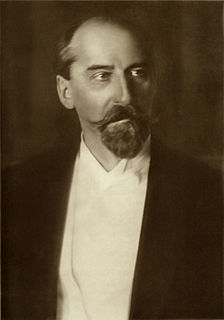
Parliamentary elections were held in Estonia between 5 and 7 May 1923. There were some controversies - some lists, most remarkably Communist, were declared void before the elections because of electoral law violations, and the results gave Estonia its most fragmented parliament ever.

Parliamentary elections were held in Estonia between 27 and 29 November 1920, the first held under the 1920 constitution. 100 deputies were elected into the new Riigikogu by party lists in 10 regions, by which one party or electoral bloc could put up several lists in one region. Seats were still distributed on the state level, where votes for different lists were summed up by their political affiliation and then seats distributed using d'Hondt formula. Thereafter seats for one party or bloc were distributed between different lists of that political force using the same formula.
The Russian Party in Estonia was a minor political party in Estonia.
A non-binding referendum on the Single European Act was held in Denmark on 27 February 1986. It was approved by 56.2% of voters, with a voter participation of 75.4%.

The Estonian Constituent Assembly was elected on 5–7 April 1919, called by the Estonian Provisional Government during the Estonian War of Independence. The Assembly was elected by party-list proportional representation in one nationwide district using the D'Hondt method. Eligible voters included soldiers at the front. The elections were won by left-wing and centrist parties.
An independence referendum was held in Estonia on 3 March 1991, alongside a similar referendum in Latvia the same month. It was approved by 78.4% of voters with an 82.9% turnout. Independence was restored by the Estonian Supreme Council on the night of 20 August.

A referendum on the transfer of Riga Cathedral to the Lutheran Church was held in Latvia on 5 and 6 September 1931. Following a 1923 referendum the Lutheran Church had been forced to share the cathedral with the Roman Catholic Church. The referendum was passed by a large margin, and despite a voter turnout of only 32%, the government decided to proceed with the legislation. The outcome of the referendum led to an increase in the popularity of civic parties in the parliamentary elections in October.
Twelve referendums were held in Switzerland in 1985. The first four were held on 10 March on abolishing primary school fees (approved), abolishing the government contribution to healthcare spending (approved), a federal resolution on education fees (rejected) and a popular initiative on extending paid leave (rejected). The next set of four was held on 9 June on the "right to life" popular initiative (rejected), abolishing the cantonal share of profits from banks' stamp duty (approved), a federal resolution on the taxation raised from the sale of spirits (approved), and the abolition of grants for the self-supply of breadstuffs (approved).
The Estonian Independent Socialist Workers' Party was a political party in Estonia.
The Economic Group was a political party in Estonia.
The Central Committee of Tallinn Trade Unions was a political organisation in Estonia.
The Settlers' Party was a political party in Estonia.
The Landlords' Party, also known as the House Owners' Party, was a political party in Estonia.
The Demobilised Soldiers' Union was a political party in Estonia between 1921 and 1925.
The Tenants' Union was a political party in Estonia.
The Estonian Socialist Workers' Party was a political party in Estonia.
The Union of Settlers and Smallholders was a political party in Estonia.
The National Centre Party was a political party in Estonia.






